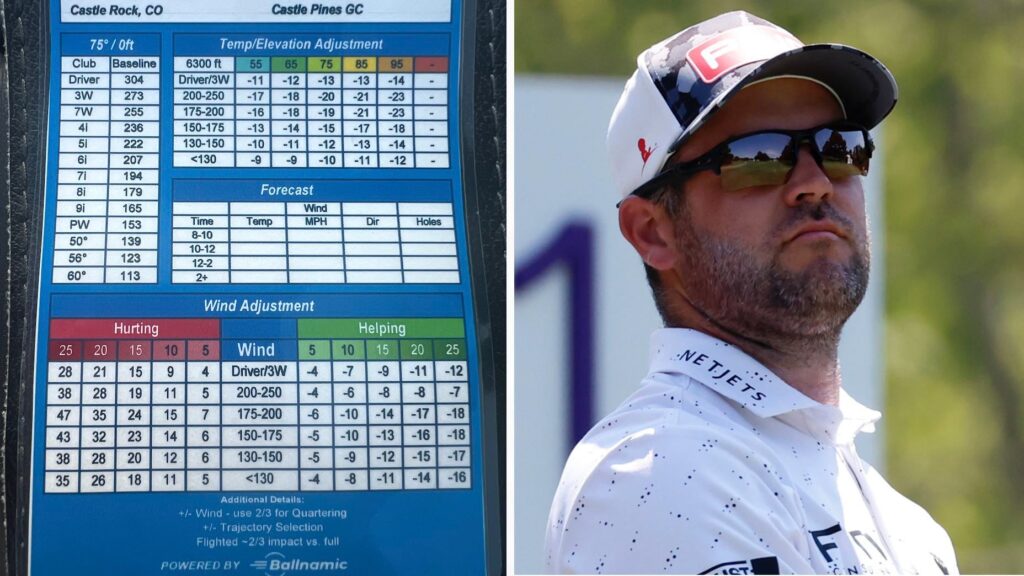The PGA Tour recently returned to Castle Pines, site of the BMW Championship, for the first time since 2006 after a two-decade run hosting The International. This week’s field includes pros who will have to calculate their yardages due to the course’s elevation of roughly 6,200 feet above sea level. Despite playing on the longest course in PGA Tour history at 8,130 yards, Castle Pines would play 7,350 yards at sea level, making it less daunting for the pros.
One of the challenges for golfers at Castle Pines is accurately calculating their yardages due to the lower air density at the high altitude. While generic percentages offer a rough idea of ball carry distances at elevation, they often fall short of the exacting standards pros require. Guesswork is not an option in the thin mountain air, emphasizing the importance of precise calculations for every shot.
To help Ping staffers calculate their yardages at Castle Pines, the tour team distributed personalized, laminated cards that consider factors such as wind speed, direction, trajectory, and temperature to produce a precise “plays-like” number for every shot. These cards have been used in the past by former Ping staffer Jim Knous and pros at the Colorado Korn Ferry Tour event. This week marks the first time they’ve been offered to Ping’s entire staff at Castle Pines.
The individualized sheets provided by Ping offer players adjustments to altitude and temperature to ensure a more precise measurement of their yardages. The cards account for the lower air density at altitude, which affects how the wind impacts shots differently compared to sea level. By factoring in player-specific data like ball speed, launch, spin, and choice of golf ball, the cards provide carry yardages based on personalized numbers, creating a more accurate guide for each shot.
Canadian golfer Corey Conners has been using the plays-like card provided by Ping during practice rounds and finds it to be spot-on and perfect for his game. Conners, who possesses specific spin characteristics with his driver and irons, benefits from the precise calculations offered by the card. While the laminated cards remain a Tour option for now, there is a possibility of making them available to a wider audience in the future to enhance players’ precision on the course.
One of the key features of the plays-like card is the wind chart at the bottom, taking into account helping (downwind) and hurting (into the wind) wind conditions. The card simplifies complex wind direction numbers into a user-friendly format, allowing players to quickly calculate their plays-like numbers based on various factors like temperature, elevation, and wind. This streamlined approach enhances decision-making on the course and provides golfers with a more accurate assessment of their shots.
Ping’s Marty Jertson, who played a key role in developing the plays-like card, expressed the desire to make this technology more widely available to help golfers improve their game. The card simplifies the process of factoring in wind, temperature, and elevation to provide a single plays-like number for each shot. This precise calculation aids golfers, especially tournament players, by eliminating guesswork and ensuring a more informed approach to their shots.
As the PGA Tour continues at Castle Pines, the plays-like card offered by Ping serves as a valuable tool for players looking to optimize their performance on the course. By providing tailored adjustments for elevation, temperature, and wind conditions, the card enables golfers to make more accurate decisions and enhance their overall playing experience. With the potential for wider availability in the future, this technology could revolutionize how players approach yardage calculations in golf.


